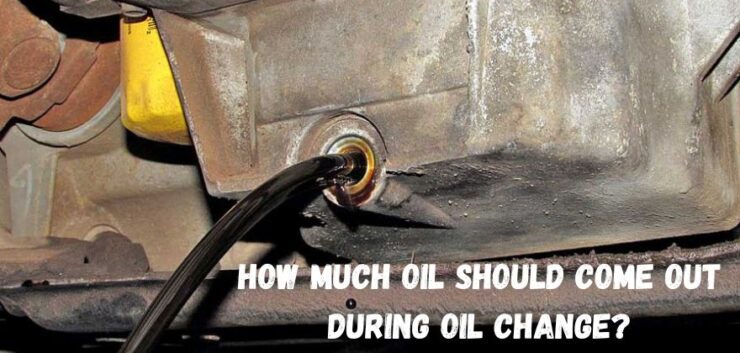Oil changes are an important part of maintaining your vehicle. Many people believe that the amount of oil that comes out during an oil change is a good indicator of how often the vehicle should be serviced. But, how much oil should come out during oil change?
That’s the question many drivers are curious about. Experts agree that an oil change should involve removing as much of the oil as possible without damaging the engine. However, there is some disagreement on exactly how much should be drained during the oil change.
This is because different factors can affect how much oil needs to be drained from an engine. So, read through our article to determine how much oil you should drain in each oil-changing session.
How Much Oil Should Come Out During Oil Change – Factors to Consider
When it’s time to refill your engine with new oil, draining the old oil is a must. However, the amount of oil that should be drained often tends to be a bit confusing. In this case, you should consider several things to determine how much oil should come out during the oil change. Check them below:
Engine Size
The amount of motor oil that needs to be drained and replaced can vary depending on engine size. This is because the amount of oil that is needed for an engine to run at its optimal performance can also vary. According to experts, engine size is the major determinant of drained oil amount.
Here is a chart below showing how much oil should be drained based on engine size.
| Size | Drained Oil Amount |
| Engines up to 2 liters (0.8 US gal) in displacement | 2.5 Quarts |
| Engines between 2 and 4 liters (0.8–1.3 US gal) in displacement | 3.9 Quarts |
| engines between 4 and 6 liters (1.3–1.8 US gal) in displacement | 5.5 Quarts |
Fuel Type
Different types of fuel have a different impact on the engine, which can affect how much motor oil should be drained. For instance, if your car is using regular gasoline, you should drain 1.5 quarts of oil each time you fill the tank. If your car is using premium gasoline, you should drain 2 quarts of oil each time you refill the engine.
Make and Model of Your Car
Manufacturers have different standards for oil use, meaning that the amount of oil that needs to be drained may vary depending on the make and model. Motor oil should be drained and refilled according to the manufacturer’s instructions. Some cars have a “service interval” indicator that tells you when it is time to change the oil.
If you have a newer car, the manufacturer probably recommends a minimum of 3 quarts be drained and replaced every 3,000 miles. In case, your car is 10 years or older, the manufacturer may recommend that 5 quarts be drained and replaced every 3,000 miles.
Driving Habit
Some mechanics may only remove 2 quarts of oil during an oil change, assuming that the car has not been driven in extremely cold temperatures or high altitudes. This is the case if you’re changing your oil on a car that has not had its oil changed in some time.
In case, you are going to drive the vehicle right away after an oil change, a full five quarts of oil should be removed because of the potential for contamination from old lubrication.
Does an Oil Change Drain-All Oil?
It’s impossible to completely drain an engine of its oil since some residual oil remains necessary for proper engine function. A small amount of oil remains in the engine during an oil change because the oil filter traps particles that have been loosened by the engine’s moving parts.
The oil filter is designed to trap these particles and prevent them from being sent into the engine. If an engine uses too much viscous oil, it can be harder for the mechanic to get all of the old oil out before refilling with new fluid. That’s because there’s not as much room for new fluid to enter the engine from the bottom as it is for old fluid to escape from the top.
How Important It Is to Drain All the Oil When Doing an Oil Change?
Old oil is not something like “poison” to your car engine or the new oil you are applying. Remaining a bit of old oil isn’t dangerous to your engine until you left it for a longer time without refilling with new oil.
When you do an oil change, the old oil that remains, together with the greasy bits floating in the water, is diluted in harmony with the brand-new oil. Nevertheless, the less old the oil, the better chance of dilution.
Most oil pans are intended to hold onto some amount of residual oil. If you look closely at them, the drain plug sits just slightly above the bottom of the pan. And while you are using the drain plug to drain the residual oil, you always have to reach a point where the oil is no longer flowing out, but only dripping out.
Even if you left it dripping for hours, you won’t be able to leave the engine empty. One rule of thumb is to quit stressing about what can be effortlessly gotten out. Don’t get overly worked up about it, whether it comes out by a long shot or a little.
The remaining oil will be diluted 5-10 times by the new oil. The worst-case can be only that you may require an oil change sometime sooner. So, it doesn’t necessarily mean that you have to drain all the oil each time doing an oil change.

